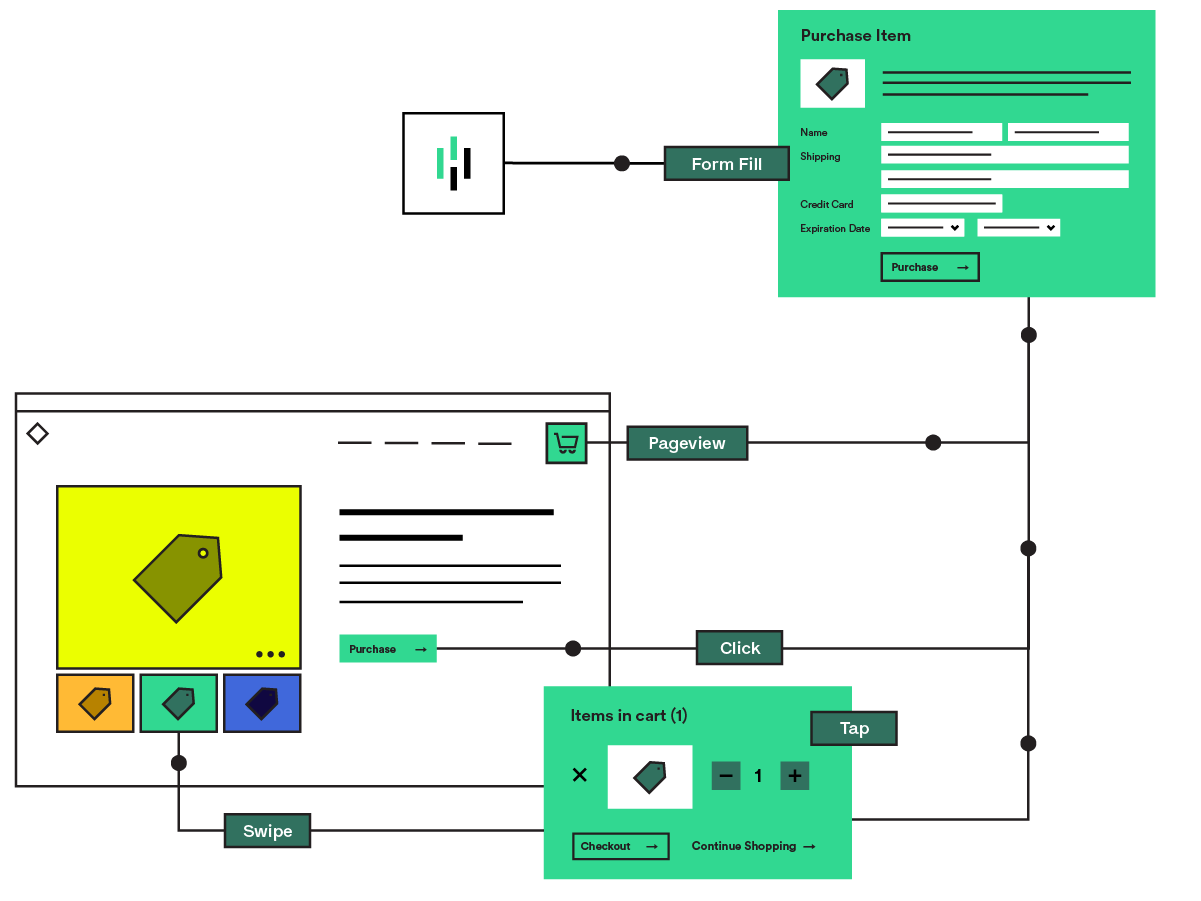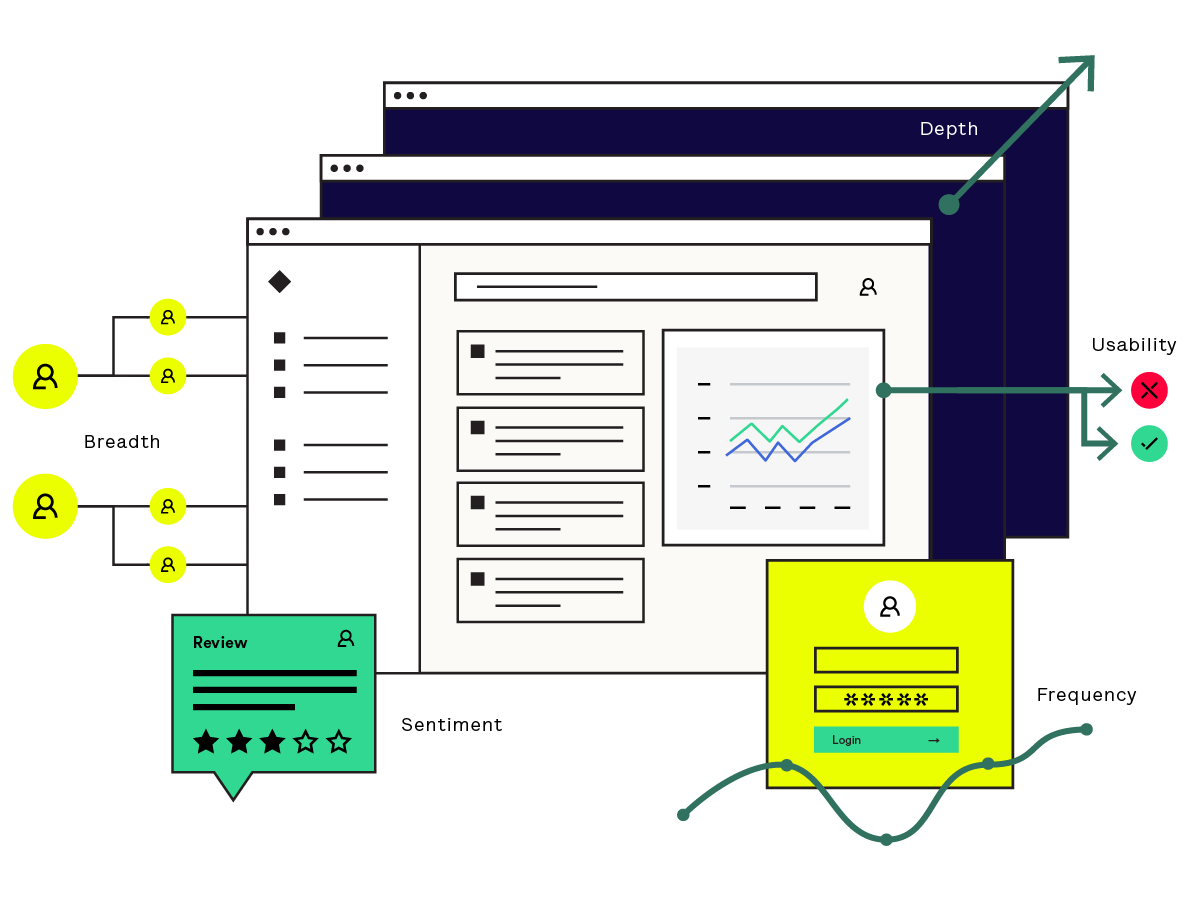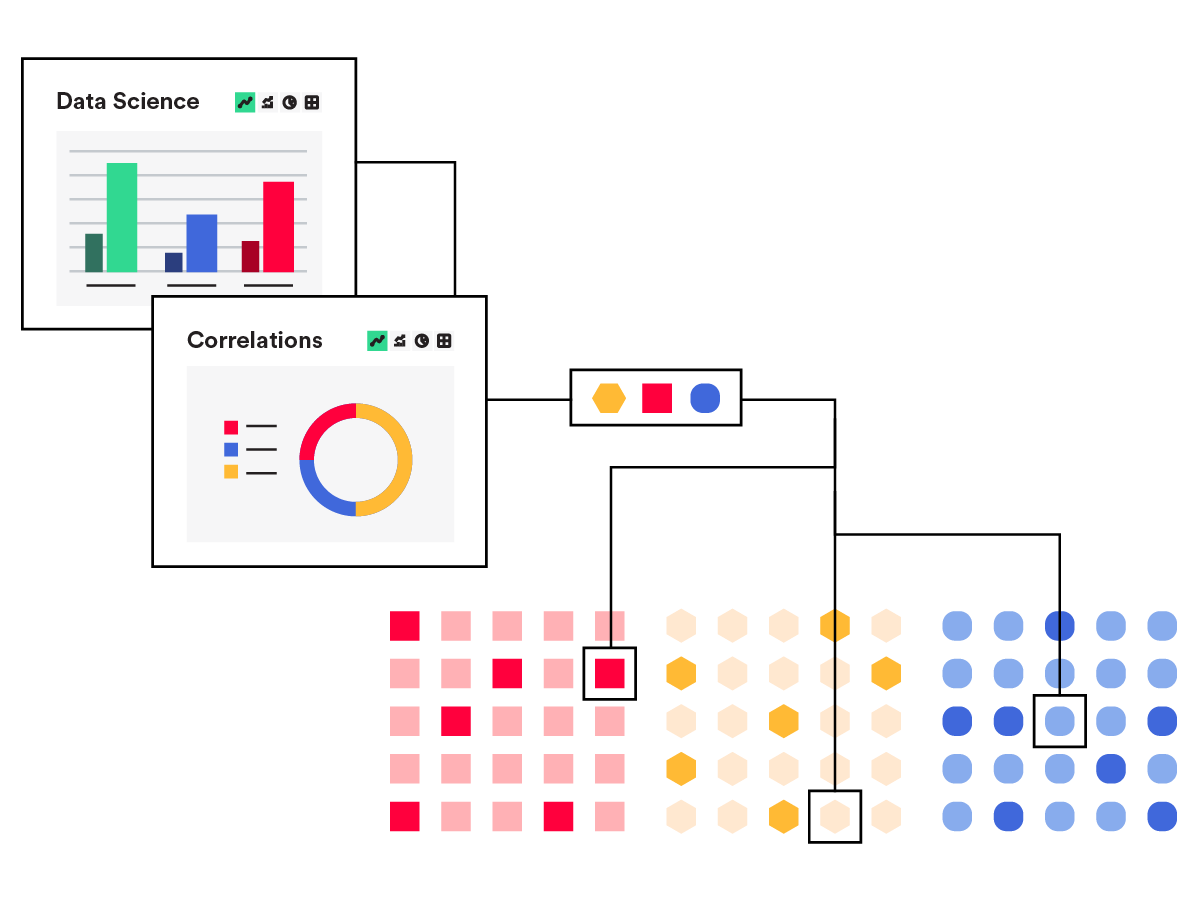Why Product Analytics
What is Product Analytics, and what can it do for you?
What is Product Analytics, and what can it do for you?
Product Analytics is a set of functionalities that capture and visualize all the ways users engage with your digital experience. It shows you every activity every user does on web, mobile, or any other platform, across a lifetime of interactions.
With Product Analytics, you can quickly understand which parts of your experience users love, where they get stuck, and what routes they take through your experience. You can see how different groups of users behave, how behavior changes on different platforms, and more.
You then use all of this information to build and improve your digital experience.
Learn more: What is Product Analytics?

The best Product Analytics platforms give you multiple sources of data. Traditional tools give you quantitative data that shows you every click, pageview, formfill, and swipe by every single visitor to your website, product, or app.
More advanced tools pair this information with Digital Experience Analytics (DXA) features like session replays, heatmaps, voice-of-customer, and more.
Top-of-the-line tools add data science to all of these, to automatically point you to moments of friction or opportunity.
This combination shows you both what users do - what they click on, where they go, etc - and why they get stuck, frustrated, or excited at different moments.
See more videos, including use cases and features, in our Video Demo Hub!

Digital Experience Analytics (DXA) solutions like Contentsquare are amazing for identifying friction, engagement, and site performance.
What Product Analytics adds to this is the ability to see what users or groups of users do over time. Product Analytics also shows you how users behave across devices - what they do on mobile vs web, or web vs IOT.
If you’re already using DXA, adding Product Analytics will let you understand user journeys across sessions, devices, and time, so you can prove ROI on even the most complex experiences.

With over 10,000 companies using Heap, there are many use cases Product Analytics helps with! But the primary ones tend to cluster around:
Dramatically improving conversions and retention, leading to significantly higher revenue
Optimizing investments in your product or digital experience, and knowing with certainty which allocation of resources will yield the best results
Shifting your team or company to a collaborative, data-driven approach to decision-making. (Some examples, of many!)

With Product Analytics, you can answer questions like:
How many sessions do users need before they purchase an item on your eCommerce site? (Do they need many sessions of search/compare?)
How much time does it take for new users to buy online groceries for the first time? To come back for a next purchase?
How do users navigate through long processes such as loan request on your Finserv site? (Do they really drop off, or do they switch devices and come back later?)
These questions are specific to industries, but they represent the kinds of full journey analysis that is crucial to improving business results.
We almost take it for granted now that every new feature that goes out has analytics on it so we can quickly see if people use it or not. That’s something we couldn’t take for granted a couple of years ago.
VP of Product